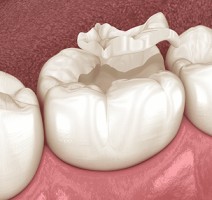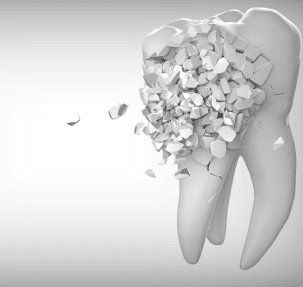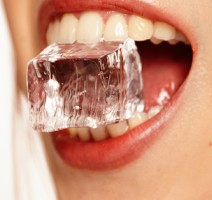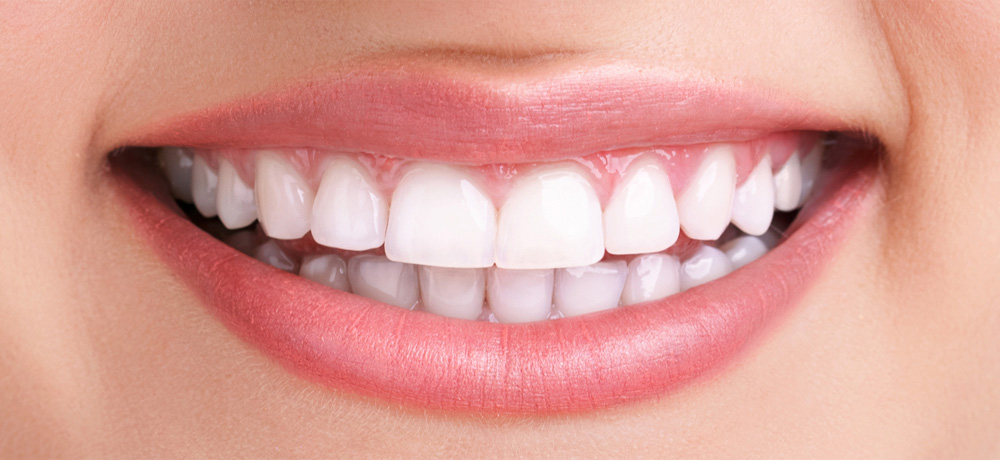Table of Contents
ToggleMany people like to chew ice, especially when it is hot or after finishing a cold drink. Crunching on ice can feel cool and refreshing, but there are risks to your teeth that you may not know about. The question is simple: Can ice crack your teeth? The answer matters.
Understanding how your daily habits can damage your dental health will save you a lot of pain and big bills later on. Chewing ice can damage the teeth, so understand why it is dangerous and what signs to look out for, as well as how you can take good care of your teeth and keep that smile strong.
Why Chewing Ice Is Harmful to Teeth
Chewing ice might seem harmless, but it can hurt your teeth in many ways. Ice is hard and cold. Tooth enamel (the outside layer of your teeth) is tough, but it is not made to bite down on something as hard as ice. Dentists often warn about the risks. Many have seen cracked or chipped teeth caused by ice chewing.
Cold ice makes enamel brittle. Biting hard on ice can break the enamel or chip off small pieces. If you do this often, you can weaken your teeth over time. The science is simple. When you bite something harder than your teeth, you put pressure on the enamel. This can cause cracks, chips, or even full breaks.
Many dentists in Brampton see patients with these problems. They give the same advice: chewing ice is a fast way to damage your teeth. If you wonder, “can ice crack your teeth,” the answer is yes. Cracked teeth can hurt, cost a lot to fix, and may need advanced treatments.
Think about what happens when you drop a glass on ice. The glass can shatter. Now, imagine chewing ice with your teeth. Your teeth are tough, but they are not as strong as some people think. Taking care now can save you pain and trips to your Brampton dental clinic later on.

How Ice Affects Tooth Enamel
Enamel covers your teeth and keeps them safe. It is thin, white, and strong. When you bite into ice, you put sudden force on the enamel. This can cause tiny cracks called microfractures.
These cracks are often too small to see. Over time, they can grow bigger. If you keep chewing ice, you make these cracks worse, leading to chips or full breaks. Once enamel is lost, it does not grow back. Dental studies show that ice chewing is a common cause of cracked or chipped teeth in both adults and kids. Moreover, choosing the best dental clinic can help you catch these problems early and protect your enamel before serious damage happens.

Risks of Cracking, Chipping, or Damaging Fillings
- Crack or chip the edges of your teeth.
- Break fillings, crowns, or dental bridges.
- Damage braces or other dental work.
If you crack or break a tooth deeply, you might need a filling, a crown, or even a root canal. Sometimes, teeth cannot be saved and must be removed. This is when you may need dental implants in Brampton.
Chips and cracks make teeth sensitive to hot and cold. Bacteria can reach the inside of the tooth and cause infection or pain. You do not want this. Fixing these problems often costs more than most expect. Seeing your dental clinic often for checkups can help you avoid major treatments.
Recognizing the Signs and Preventing Damage

Symptoms of a Cracked Tooth
- Sharp pain when biting or chewing.
- Sudden pain when eating or drinking something hot, cold, or sweet.
- Sensitivity that does not go away.
- A line or crack you can see on your tooth.
- Gum swelling or pain near one tooth.

Prevention and Safer Alternatives to Chewing Ice
- Do not chew on ice cubes. Let them melt in your mouth instead.
- Choose cold drinks without ice or use a straw to skip the ice.
- Try crunching on cold, sliced veggies if you crave a crunch.
- Chew sugar-free gum to keep your mouth busy.
- Add crushed ice instead of large cubes if you must have ice.

When to Seek Professional Dental Help
Book an appointment if you notice-
- Lasting pain after chewing.
- Broken dental work.
- Sudden sensitivity.
- A visible crack or chip.
Professional help keeps small problems small and saves healthy teeth.




